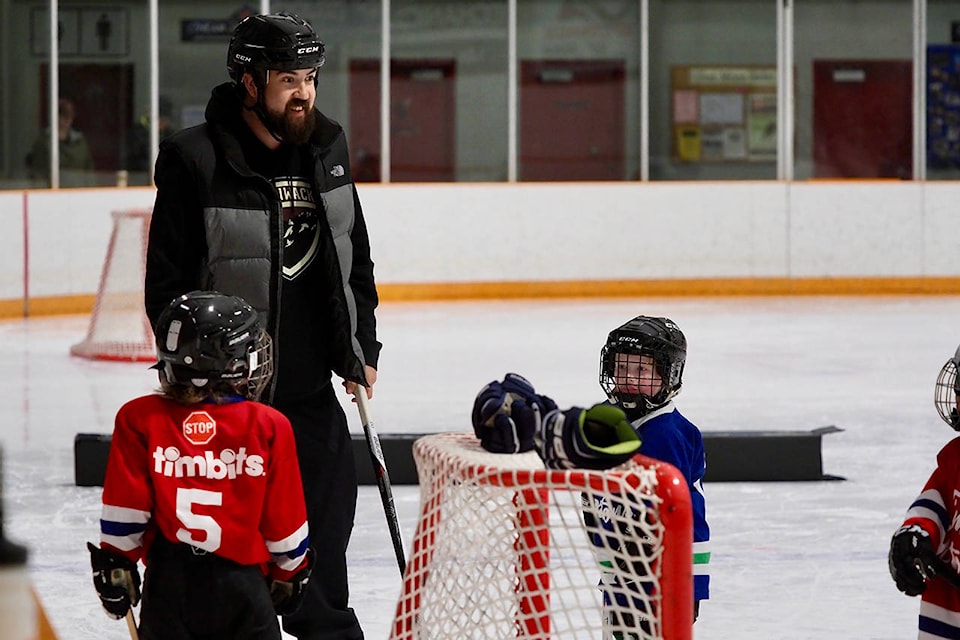The minor hockey is upon us and with it comes a lot of fun, cheering, laughter, and energetic play from a host of players who will range from five year old struggling to stay on their skates to accomplished 20-year-old athletes.
It’s a great game, after all.
ALSO READ: Girls league fills a void
But for some parents, the risk of concussions has complicated the choice to allow their child to play hockey, of for that matter, any contact sport.
Although statistics aren’t available for minor hockey in Canada, according to Harrison Brown of HeadCheck Canada, information from the U.S. has shown that over a two-year span there has been a one-third reduction in parents registering for contact sports like football and hockey.
Todd Jackson, the director of insurance and risk management for Hockey Canada, acknowledged his organization has taken the risk of concussions seriously.
“Any concussion in a child is a serious problem. That’s why we’ve taken steps to address the possibility of concussions and take it very seriously,” he said.
Jackson described the two pillars of action that his organization has taken to mitigate the possibility of concussions in young hockey players, saying that the first “pillar of response” is education.
But it’s the second pillar of prevention that Jackson said has the most effect.
“Rule changes have taken place that really helps. A few years ago we came out with a no head contact rule and, if a head injury does occur, we follow the Berlin consensus on concussion that outlines the limitations on return to play for that athlete.”
RELATED: Pro teams show poor example
Brown, however, fears that putting these protocols in place is simply not enough.
His company has developed an app and computer program follow-up that allows hockey organizations to ensure that these protocols are actually being followed at ice level. The system will flag minor hockey players who have received a head injury, and that flag will stay in place until the player has been cleared by a doctor.
“We work with more than 700 sports organizations and it’s really at the senior levels where protocols seem to be most effective. But, at the lower levels, like minor hockey, it’s sort of hit and miss,” said Brown.
“You may have 30 teams in a league and 25 of them are doing a good job, but the other five might be missing the boat. This system addresses that gap.”
Brown added it’s not enough for leagues to say they have a protocol in place if they don’t have the data to show that the protocol is being followed.
And it’s also not enough for parents to put their faith in the protective equipment with which they outfit their children.
A 2014 statement from the Canadian Competition Bureau said that “current hockey helmet testing standards are aimed at protecting players from catastrophic brain injuries, such as skull fractures, not concussions”.
The bureau took steps to force Reebok-CCM to stop claiming that its hockey helmets prevented head injuries, including concussions.
And, as for getting a doctor’s clearance to return to play; that may not be enough.
Recent research by Dr. Ravi Menon, who is the Canada Research Chair in Functional Magnetic Resonance Imaging, has shown that even at the three-month point there is still some signs of damage in young people who have been concussed. Although there is still a question about whether this puts the child at risk, Renon said that more research needs to be done.
“What we can say is that there is still damage long beyond the time they were told they were good to go,” said Menon.
Jackson, though, maintains that hockey is a great sport for children and that his entire organization, from the national level to community volunteers in places like Sooke, are doing their best to create a safe, welcoming environment for players.
“We’re constantly learning and changing to make sure that the kids playing the game have fun without putting themselves at risk. That’s our number one goal.”
mailto:tim.collins@sookenewsmirror.com
Like us on Facebook and follow us on Twitter
